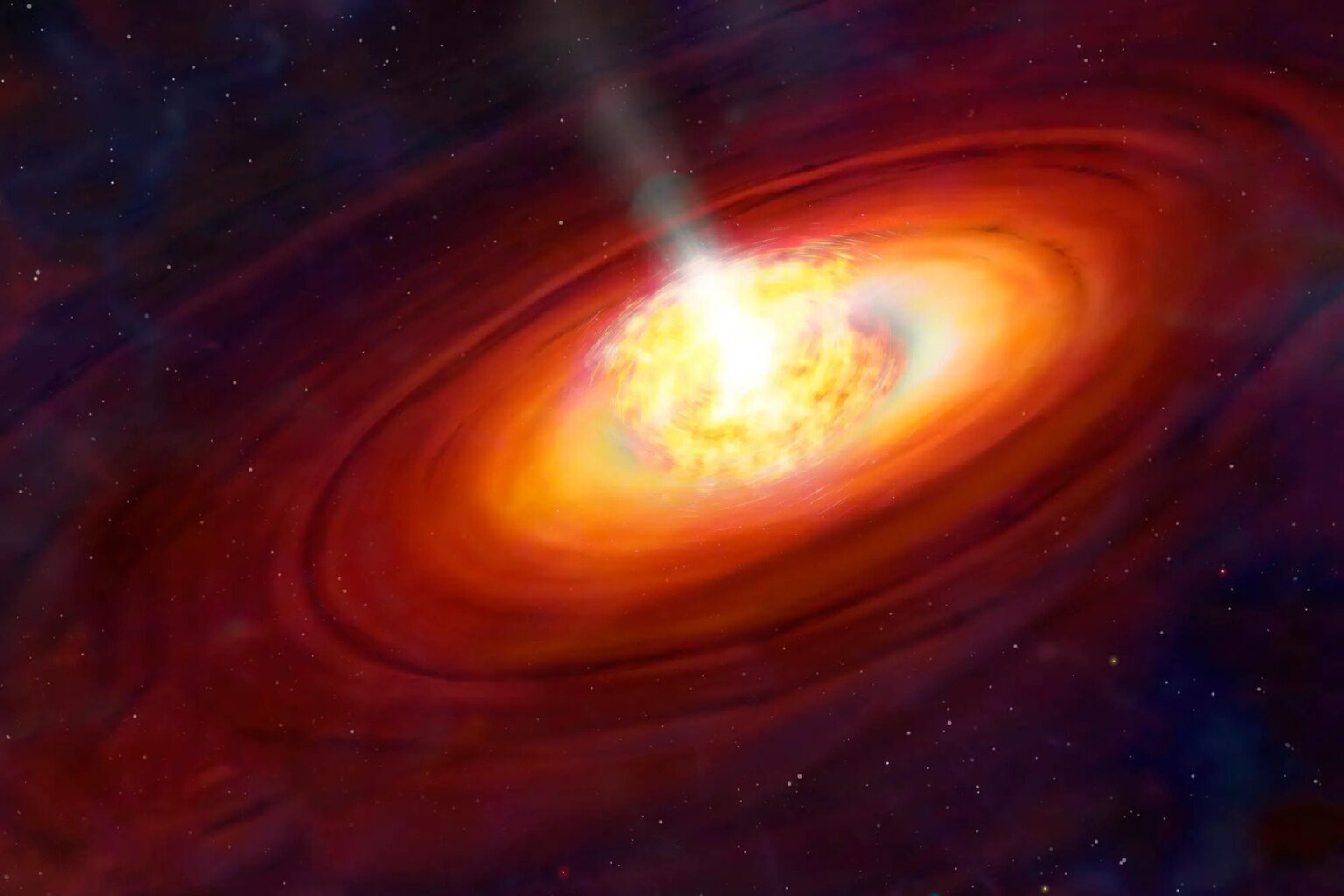Scientists working with the James Webb Space Telescope have performed spectroscopy of a protostar that is just getting ready to become a full-fledged luminary. They found a lot of organic molecules around it. And the jets shooting out of it into space contain metals.

James Webb explores a newborn star
Scientists from the Japanese Research Institute RIKEN decided to use the James Webb Space Telescope to study the protostar. This is the name of a luminary that has just been born and a matter from a gas-dust cloud continues to fall on it, which has given it life.
James Webb used the entire arsenal of its instruments operating in the infrared part of the spectrum, so it was able to obtain not only an image of the star, but also the spectrum of its radiation. Thanks to this, scientists were able to determine which molecules are in the cloud that surrounds the newborn luminary.
Protostar and the organics around it
It turns out that water ice crystals, carbon dioxide and silicate formations are present among the gas and dust that surround the protostar. Most of all, they were interested in organic molecules that they managed to see there.
Full results concerning organics are still not available. But James Webb has already been able to see matters such as ammonia, methane, methanol, formaldehyde and formic acid. There are also notes of ethanol and acetaldehyde.
These substances were already known from preliminary studies of gas-dust clouds, from which stars were formed. They are not uncommon in comets of the Solar System. However, researchers believe that at the protostar stage, they could be synthesized on ice crystals and even turn into more complex organic structures, such as nitrogenous bases that make up DNA.
Streams of matter contain metals
Another interesting result of this study is the data on the jets that the protostar throws into space. They are caused by the fact that part of the matter accelerates too much when falling. Scientists have known about their existence for a long time, but they have only seen it properly now.
It turns out that they carry a lot of elements into space: hydrogen, iron, nickel, neon, argon and sulfur. At the same time, the speed is 200 km/s. They enrich the space around the heavy elements necessary for the formation of planets.
According to phys.org.
Follow us on Twitter to get the most interesting space news in time
https://twitter.com/ust_magazine

